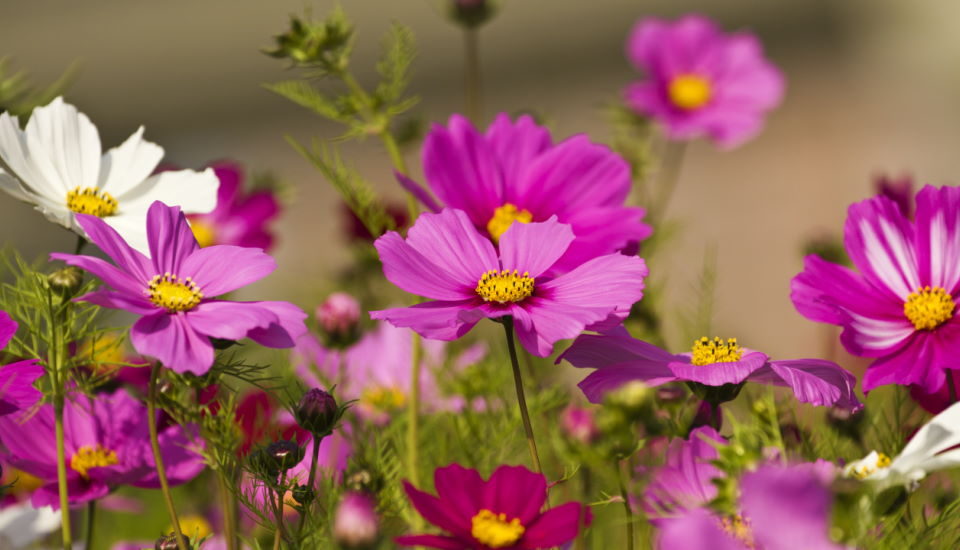Garden Cosmos (Cosmos Bipinnatus): How to Grow & Care
Let us introduce you to one of the most beautiful plants you can grow in your garden, especially in the summer. Garden Cosmos (Cosmos bipinnatus) is a plant that provides you with beauty and benefits you in many ways. So, without further ado, let’s begin our article.
What is Garden Cosmos (Cosmos Bipinnatus)?
Cosmos plants (Cosmos bipinnatus) are a must-have for many summer gardens. They reach varying heights and coming in various colors to add frilly texture to the flower bed. When single or double blooms appear on stems reaching 1 to 4 feet in length, cosmos flower care is simple and rewarding (0.5-1 m.). Cosmos plants can be found at the bottom of a descending garden or in the center of an island garden. Taller varieties may require staking if not planted in a wind-protected location. Planting cosmos flowers yields a variety of uses for the specimen, including cut flowers for indoor display and backgrounds for the other plants. Cosmos can also be used as screens to hide unsightly landscape elements.
When to Plant Garden Cosmos?
You should sow the garden cosmos seeds directly outside after the danger of frost has passed. Alternatively, you can also sow seeds in trays or pots with a good seed-starting mixture 4 to 6 weeks before the last spring frost. Then, when they’re 3 or 4 inches tall, transplant them into 5-inch pots. Once the danger of frost has passed, young plants (transplants) can be planted outside.
How to Grow Garden Cosmos?
- Sow seeds lightly, no more than a quarter-inch deep.
- When seedlings are a few inches tall, thin to 12–18 inches apart.
- If you’re starting cosmos from seed, keep in mind that it takes about seven weeks to bloom. However, your flowers should continue to bloom until the season’s first frost.
- Cosmos will self-sow throughout your garden if you let the spiky-brown seed heads blow away in the fall.
How to Care for Garden Cosmos (Cosmos Bipinnatus)?

- Deadhead the plants (prune off dead/faded flowers) to extend flowering time. This promotes flower development and branching.
- Because some of these plants can grow quite tall, staking may be required to care for them better. Provide them with wind protection, encourage balanced branching by pinching out (or pruning) central shoots or stem tips, or stake them. They can also be grown against a fence to provide the necessary support.
- Water regularly until the plants are established or if the weather is unusually dry. Make sure not to over-water your cosmos; over-watering and over-fertilization can result in plants with fewer flowers. Cosmos can grow in dry soil, even in a hot, arid, sun-baked location.
- Cosmos beds can become weedy because they self-seed, so remove flowers before they go to seed or thin seedlings in the spring.
Conclusion
In this article, we gave you information on how and when you can grow garden cosmos and how you can care for them. Again, if you are looking for what you can plant in your garden in summer, you should consider cosmos bipinnatus as it is a great option. We hope this article has helped you.
Sources:
https://www.almanac.com/plant/cosmos
Other Flowers:
Oriental Poppy (Papaver Orientale): How to Grow & Care
African Lily (Agapanthus Africanus): How to Grow & Care


